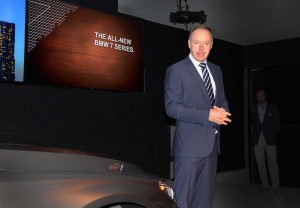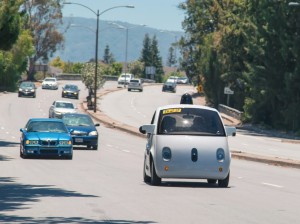The technology is rapidly falling into place but the biggest challenge could be getting regulators and lawmakers to put into place the rules and laws needed to bring autonomous vehicles to market.
The National Highway Traffic Safety Administration plans to begin laying out guidelines for self-driving vehicles in the next few months, U.S. Transportation Secretary Anthony Foxx announced.
Federal regulators have said that autonomous vehicles could lead to a sharp drop in the number of crashes, injuries and fatalities on American highways, and have already taken initial steps to encourage automakers to expand their research into self-driving and advanced safety technologies.
“Technology can help us,” said Foxx, during a meeting in Washington.
NHTSA Director Mark Rosekind earlier this year said that autonomous vehicles could eventually bring down to zero the number of U.S. highway fatalities. Roadway deaths have come down 40% since peaking in the 1970s, reaching a low of around 32,000 in 2014. But still-incomplete data suggests that the tally rose as much as 8% last year, in part due to increased traffic as the American economy has recovered.
Foxx’s comments will likely be taken as good news within the auto industry. Most major manufacturers – and several tech firms, including Google – are already working on advanced autonomous vehicle systems. Tesla released its AutoPilot, capable of driving hands-free on limited access highways, late last year. And Nissan has promised to have as many as 10 autonomous vehicles in production by 2020.
(Autonomous vehicles expected to yield 10% improvement in fuel economy. Click Here to see how.)

"The technology will be ready before the legislation is there," warns BMW board member Ian Robertson.
But industry leaders say a jumble of state and local rules could delay full implementation of autonomous technology. “The technology will be there before the legislation is there,” BMW Board Member Ian Robertson said during an interview with TheDetroitBureau.com last week.
During his breakfast meeting, Foxx echoed that concern, noting that the rulemaking process is too slow and cumbersome to deal with the rapid pace of technological development transforming the auto industry.
In January, Foxx and Rosekind held a series of speeches and news conferences in Detroit outlining their view on the benefits of technology and promising to find ways to speed up implementation. One example came with NHTSA’s decision to authorize BMW to begin U.S. testing of its remote valet technology which can park a vehicle with no driver onboard.
Foxx also announced in January that NHTSA had formed a new consortium with 20 automakers aimed at bringing new safety technology to market faster than would be possible through traditional regulatory processes. An example of that approach was the announcement earlier this month that the industry would make automatic emergency braking standard equipment by 2022.
(For more on the voluntary AEB announcement,Click Here.)
The Obama Administration has also proposed a 10-year, $4 billion program that would begin the process of rolling out a nationwide connected car network. Using so-called vehicle-to-vehicle and vehicle-to-infrastructure technology, it would keep drivers alerted to traffic and weather problems and help them detour around highway snarls. It could also be used to alert autonomous vehicles to situations such as another car running a red light.
That project has received a “little frosty” reception from Congress, which must approve the proposal as part of the 2017 federal budget, Foxx said.
NHTSA recently took a first step towards authorizing autonomous vehicles, advising Google that its self-driving technology would be considered the equivalent of a human driver under federal rules. Exactly how that will play out, however, still needs to be clarified.
While the first autonomous vehicles are expected to hit the road by 2020, a new study by Moody’s Investors Service predicts it will likely be closer to 2030 before there’s a significant surge in demand. The report predicts self-driving technology will become a standard feature on all new models sold in the U.S. by 2035.
(Click Here for more on the new Moody’s study — which predicts a drop in insurance rates for autonomous vehicles.)


